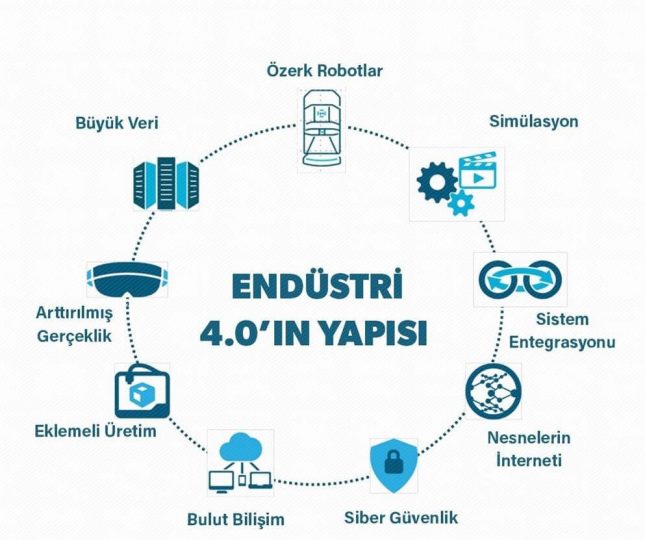
“Industry 4.0”, which is among the most talked about concepts of the last period, is not a program or a coding language, but a systematized version of a project or target. The main subject of the concept put forward by Germany is the adaptation of all living spaces to information technologies and a life cycle that is fully integrated with smart technology. It can be said that Germany, the USA, China and many other countries are members of this target.
The first target is for the adaptation of the industrial field to information technologies. Contrary to the classical software, program and hardware for this; The first phase is the production of technologies that take up little space, have high efficiency and do not pose a risk in terms of reliability, and disseminate their use. One of the striking targets within the scope of Industry 4.0 objectives is the device-based internet access target. In this way, internet service usage will be possible without the need for an additional protocol or internet tool for connection and data exchange between smart devices. One of the important issues targeted in this process is an industrial sector with smart factories. One of the goals is to expand the machines that do not need or need less outside intervention with smart operators placed in every device and a cyber-physical system created. Principles… Knowing some of the principles of the Industry 4.0 system will be a valuable information in terms of understanding what it aims at. For example, the principle of interoperability refers to the communication between robot and machine. It is a principle that allows the robot to communicate with the system owner if the machine, which does not need outside intervention, optimizes itself, but in case of any unsolved issues. Communication between human and robot is provided by the principle of virtualization. It is an autonomous system and intervenes in the entire production process in a smart factory based on data obtained through data analytics work. It adapts to the new situation by directly intervening in the production plan in case of any disruption or data change. The most important advantage of this system is that there is no need for a new production machine or hardware for the desired change in the production model, and it allows the transition to the targeted production plan with a new software solution.